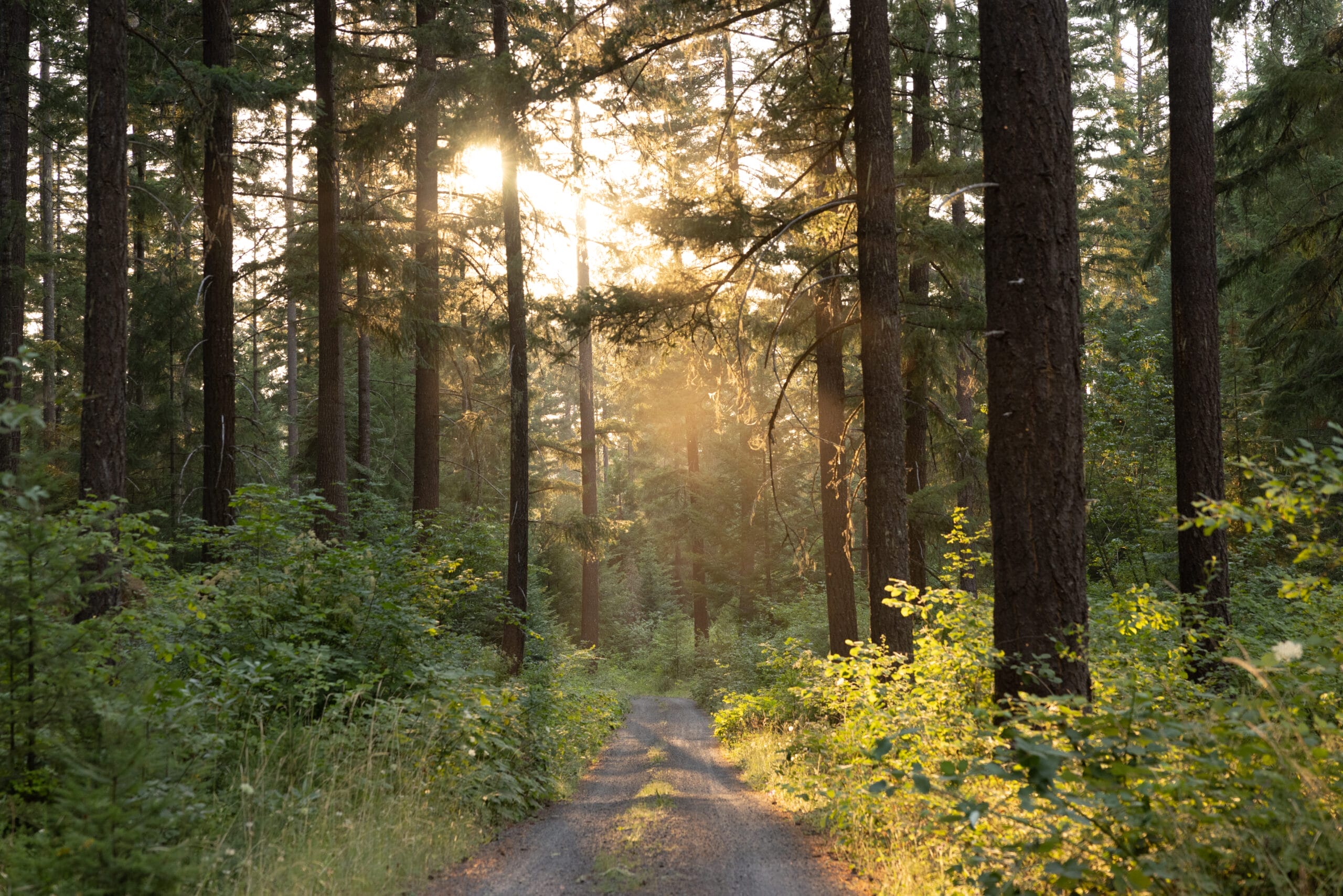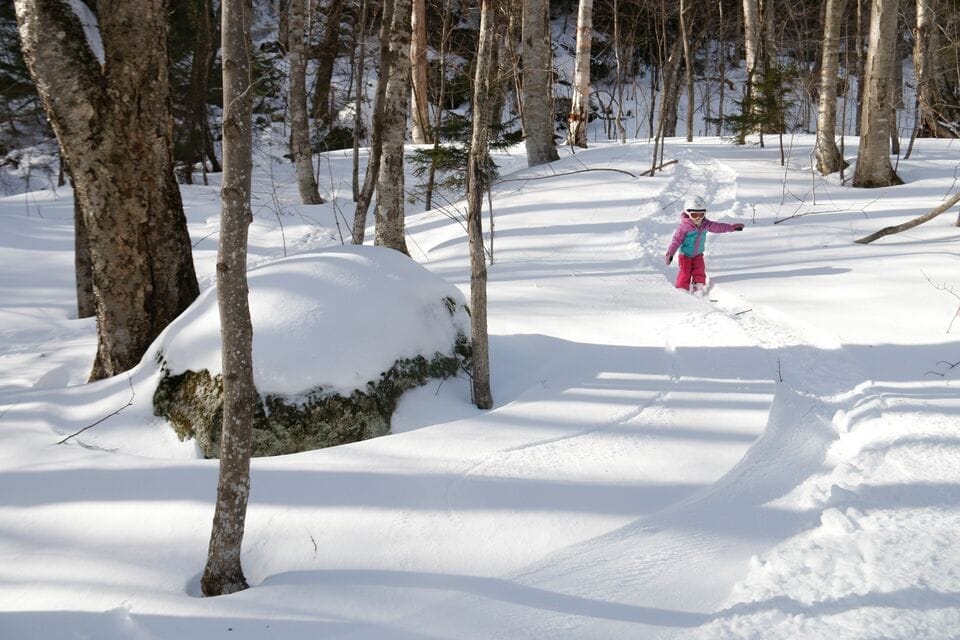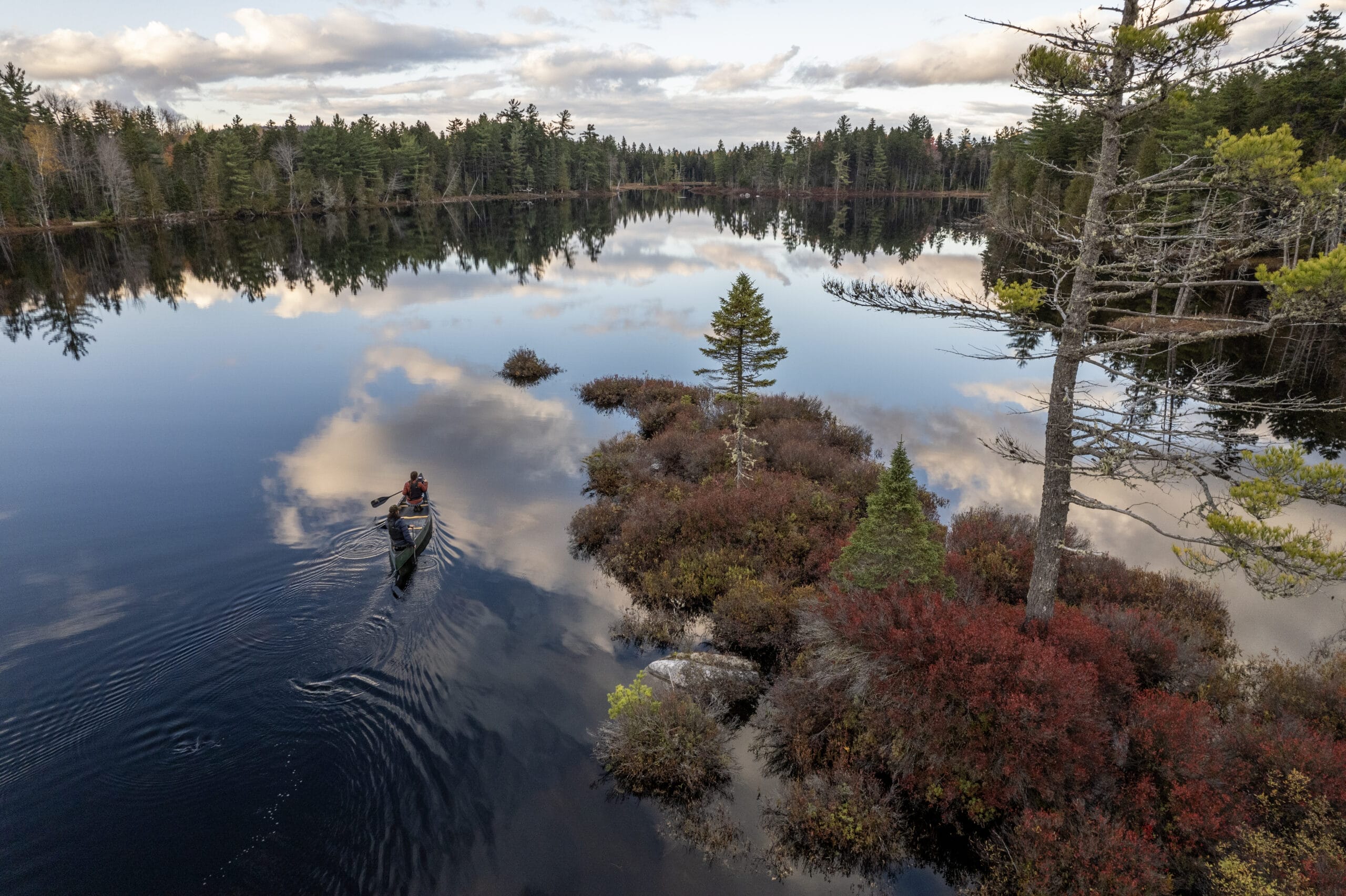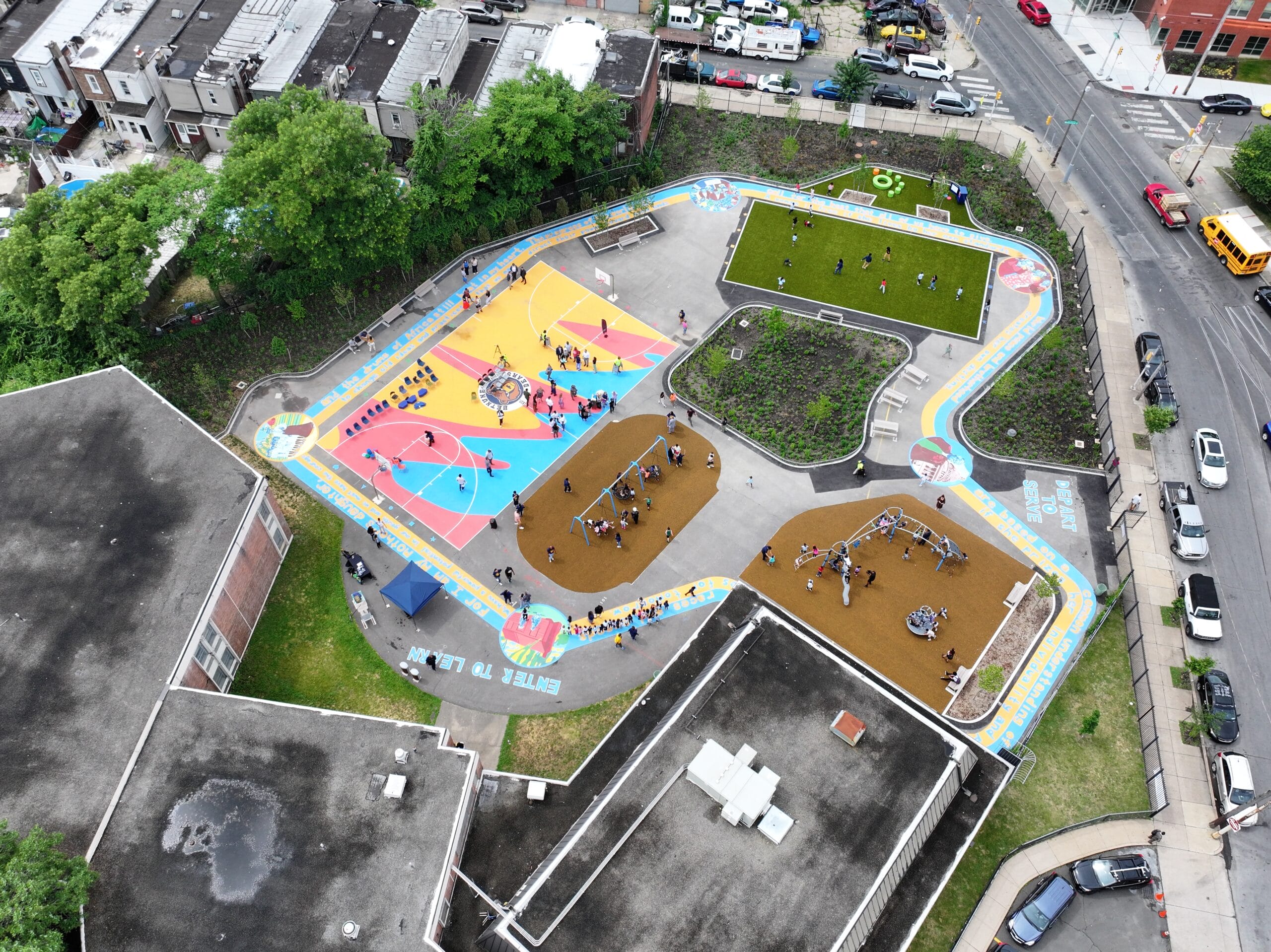
A Central Park for Santa Fe
A Central Park for Santa Fe
Phil and Eleanor Bove are the memory keepers of the Acequia Madre, a seven-mile irrigation ditch off the Santa Fe River in what is now metropolitan Santa Fe. The "Mother Ditch" was presumably dug during the Spanish settlement of Santa Fe, around 1610—the largest ditch (as its name implies) bringing precious water to the city. "But nobody really knows," Phil says, "because the records were destroyed during the Pueblo uprising of 1680."
We're sitting in the Bov?s' small adobe house just a few feet from the Acequia Madre, discussing how one of Santa Fe's oldest manmade structures has been incorporated into a brand-new—and long-awaited—civic feature. Last September, after decades of dreaming, planning, and development, Santa Fe dedicated its 12- acre Railyard Park and Plaza in the heart of the city.
The acequia is a simple structure: a ditch three or four feet deep and perhaps five feet wide, lined by Siberian elms that soon will be replaced by newly planted cottonwoods. But despite its humble aspect, the acequia represents for many Santa Feans the soul of an older city that has been largely built up and paved over. And now, one could argue, it is the soul of the wondrous new park that has sprung up around it.
During park construction, the Bov?s tell me, archaeologists uncovered six side ditches off the Acequia Madre, suggesting that crops once were grown on what is now parkland. In the early 1880s, the land was inadvertently preserved from development by the arrival of the railroads for which the new park is named. From the north came the Denver & Rio Grande (D&RG) narrow gauge, popularly known as the Chili Line; from the south came the New Mexico Central and a spur line of the Atchison, Topeka, and Santa Fe (ATS&F) Railroad. For more than a century, the land was occupied by railway stations, tracks, and sidings; coal and oil depots; lumberyards; and warehouses.
But the railroads began to decline in the middle of the 20th century, and by the 1980s the railyard had become a collection of deteriorating industrial buildings and empty, dusty lots. The old D&RG station had been reborn as Tomasita's Restaurant, a popular eatery known for its traditional New Mexican cuisine. And the stucco ATS&F station became the headquarters of Santa Fe Southern, which bought the spur from ATS&F in 1992 and began running excursions trains and some freight to and from the town of Lamy, 18 miles southeast.
Catellus Development Corporation, a real estate holding company that took over the railroad properties, ended up owning the land. Catellus proposed a dense, six-story development on one portion, but strong community opposition led the city council to veto the proposal in 1992. Shortly thereafter, new mayor Debbie Jaramillo and an ad hoc group that included two city councilors decided that the city should buy the 50-acre property, and that at least part of it should be dedicated as a park and community gathering place. Santa Fe's original downtown gathering spot, its historic plaza, had become increasingly dominated by tourists, and Mayor Jaramillo saw a future Railyard Park and Plaza as a place residents could call their own.
Meanwhile, because rents were low and leases short-term in the railyard's former industrial buildings, nonprofits and community groups had begun to take up residence in them. By the 1990s these included Warehouse 21, a teen art center; SITE Santa Fe, a contemporary art exhibition space; and El Museo Cultural, an exhibit and performance space that at first served primarily the Hispanic community. Eventually, the railyard also became home to the twice-weekly Santa Fe Farmers Market. Each of these organizations drew hundreds of people—thousands, in the case of the farmers market—to the formerly derelict property for regular events and special exhibits. The nonprofits and visitors became an important constituency for a possible park.
Planning A Park
In 1995, The Trust for Public Land took its first step in what would be a 13-year journey with the railyard project by acquiring the 50-acre railyard for the city. As a nonprofit, TPL was able to help Catellus realize a sizable tax savings and bring the railyard to the city for $21 million, approximately $8 million less than the land's appraised value. As part of the deal, TPL required the city to reserve a minimum of ten acres for a future park. Later, the city asked TPL to fundraise for and manage the park's design and construction. Ultimately, TPL's first urban project in New Mexico became one of its longest-running and most ambitious urban projects anywhere.
Following the railyard purchase came a yearlong community planning process to determine the future of the entire property. This was organized by TPL, the American Institute of Architects, city government, and the nonprofit Santa Fe Land Use Resource Center, a community-based planning and advocacy group.
"Residents are the experts, and we needed to learn from them," says Steve Robinson, an architect and founding member of the resource center, and an early proponent of public participation in the redevelopment process.
In the end, an estimated 6,000 residents contributed ideas and opinions to a plan for what should happen to the former railyard. It called for redevelopment that would protect the integrity of adjoining historic neighborhoods; retain the railyard's "authentic, gritty, rugged" architectural quality; encourage alternative modes of transportation; create a pedestrian-oriented environment; and provide significant amounts of park and open space. The project—exclusive of the park and open space—was to be developed and managed by a new nonprofit, the Santa Fe Railyard Community Corporation (SFRCC), with a board representative of the whole community. Robinson was soon named to head the board.
At about the same time, TPL convened a group of stakeholders to work out the parameters of the conservation easement that the city would grant to prevent development on the park portion of the property. Over 14 months, the easement committee— representatives from the lead nonprofits, the city, neighborhood groups, local foundations, and the Santa Fe Southern Railway (which was still operating a rail line through the site)—met to bang out the broad outlines of a document that would guide the creation of the new park. "The easement was the first pass at formulating ambitions and aspirations for the property," says former TPL regional director Ted Harrison, who facilitated the group. "It was a way to anchor ideas about the public realm" as the project developed.
In the end, the easement committee affirmed that the park should be primarily a place for meeting, for reflection, and for light recreation. These uses inherently would exclude others: there would be no basketball courts or baseball diamonds, nor should the open space be simply a nature preserve. Completed in 1999 and accepted by city council and legally recorded the next year, the conservation easement forever protected the public spaces that would be come the Railyard Park and Plaza.
A Park That Reflects Its Community
In 2001, TPL launched an international design competition for the railyard's public spaces, based on the conservation easement and the formal master plan for the entire property. Fifty-six competition entries led to five finalists; ultimately, the jury selected the entry submitted by the New York-based Ken Smith Workshop. Led by landscape architect Ken Smith, the team included architect Fred Schwartz, renowned landscape artist Mary Miss, and New Mexico landscape architect Edith Katz.
TPL program director Brian Drypolcher oversaw the competition and what would become a seven-year effort to execute the park's construction. TPL's New Mexico state director Jenny Parks describes the project, from a financial and design standpoint, as "the largest park TPL has ever built, involving dozens of TPL employees and a thousand volunteers."
The public areas of the railyard property include the park and a connecting appendage known as the Alameda, which includes a one-acre plaza. The railroad dictated the linear nature of the site, which the design team put to good use. The sweep of the Alameda is bordered by the outdoor sheds of the seasonal farmers market and embellished at intervals with benches and tables, newly planted trees, and a round cedar water tower. The tracks of a new commuter rail line run down the center. The whole evokes railyards of the past, minus the industrial harshness and softened by adjoining narrow streets and sidewalks.
Where the Alameda leads into the broader park, its sense of linearity dwindles and then vanishes, inducing you to slow your pace, look around, and take in the carefully thought-out native landscaping and plantings. A flagstone-lined acequia ni?a, a baby ditch, angles off from the deep cut of the Acequia Madre toward community gardens and a "waffle" garden— modeled on Native American farming practices and named for the water-saving grid of plantings in which each block can be watered separately. A footbridge crosses a "pond" wittily filled with lumps of dark blue glass. These and other circular structures in this section of the park echo the forms of the round wooden water tower in the Alameda and an elaborate circular play area designed by landscape artist Mary Miss.
The waffle garden, the "pond" of rocks, the water tower: all reference the importance of water in this arid environment. Irrigation water for the park comes from the 35,000-gallon water tower and from five 15,000-gallon underground storage tanks. They in turn are filled by rainwater that drains from the rooftops of seven railyard structures. From the bottom of the water tank, a mist of water descends on a display mapping the Santa Fe watershed. Coincidentally, the park and the Alameda command a stunning view of the Sangre de Cristo Mountains—the source of water for that watershed, for the Acequia Madre, and for crops grown all over northern New Mexico and sold at the farmers market (including the garlic this writer grows on his own farm).
This is just one way that the new park and plaza are deeply connected to the region and its people. In December 2008, the Rail Runner commuter train started frequent daily service between the old depot on the Alameda and points south, including Albuquerque. A new pedestrian and bicycle path parallels the tracks deep into Santa Fe's southern neighborhoods—the first of several pathways that will link the park and plaza to districts throughout the city and beyond.
With TPL's help, a new Railyard Park Stewards group has been formed to care for the park and provide enhanced programming. Many dimensions of Santa Fe converge here: history, water use, local agriculture, transportation, education, arts and culture, and community. Gathered in proximity are the park and the Alameda, four buildings full of nonprofit offices, private businesses, the bike path, and a publicly owned commuter line.
"No private developer in his right mind would have done this, ever," Railyard Corporation board chair Steve Robinson proudly proclaims.
The railyard redevelopment has spanned 15 years, forging ahead through what sometimes seemed like insurmountable obstacles, including a real estate bubble, soaring construction costs, wavering public opinion, conflicting claims by innumerable stakeholders, and finally a national financial meltdown. TPL remained a guiding presence and prime mover throughout.
Last September's grand opening of the park and plaza attracted an estimated 20,000 people. "I had never before seen such a true cross-section of the community," says Carmella Padilla, who grew up in Santa Fe and worked on the park project as both a volunteer and a TPL contractor. In the months since, citizens' engagement with the park has continued to grow. Requests are pouring in to use it for a graduation, arts and crafts markets, walkathon, 5K race, film festival, concerts, Santa Fe's annual fiesta celebration, and the 400th anniversary observance of the Spanish settlement.
It is Padilla who reminds me of a final piece of railyard history when we meet for coffee at the Station Caf?, located in the restored 1914 Gross Kelly Almac?n Warehouse—the most distinguished adobe-style building on the railyard. "You know," she says, "the Santuario de Guadalupe, just up the street, was the Santa Fe terminus of the Camino Real." The "royal road" from Mexico City was Santa Fe's founding artery almost 400 years ago. How fitting that it runs through the heart of the city's new nexus, which is restoring old connections and setting new ones in place.
Stanley Crawford is the author of seven books, including Mayordomo: Chronicle of an Acequia in Northern New Mexico, which won of the 1988 Western States Book Award for Creative Nonfiction. He lives in Dixon, New Mexico, where he raises garlic that he sells at the Santa Fe Farmers Market. He served as a representative of the farmers market during planning for the Railyard Park and Plaza, the market's new home.
Despite the importance and popularity of our forests, they face unprecedented threats. Take action now and urge Congress to protect our country’s forests by signing our petition today!


Donate to become a member, and you’ll receive a subscription to Land&People magazine, our biannual publication featuring exclusive, inspiring stories about our work connecting everyone to the outdoors.
See how our supporters are helping us connect people to the outdoors across the country.











